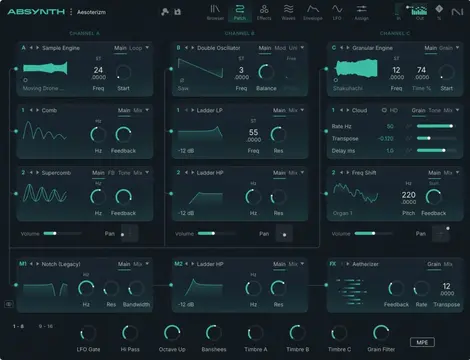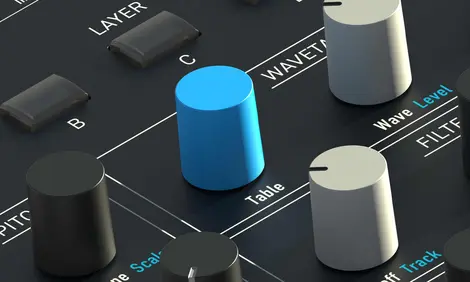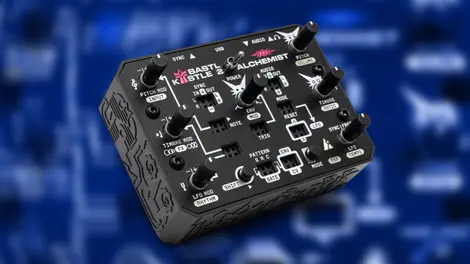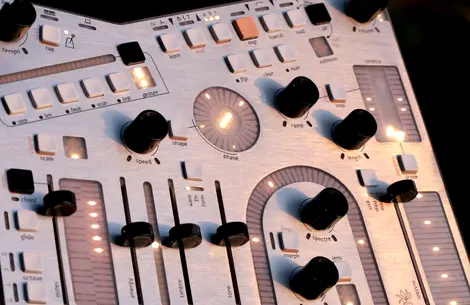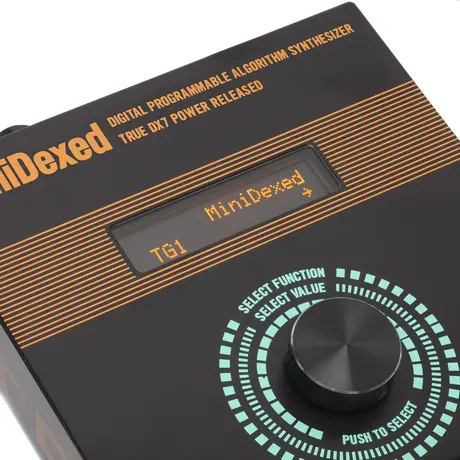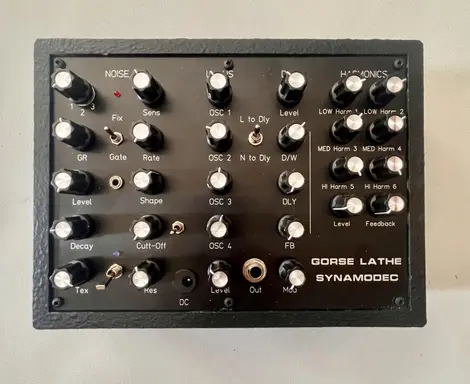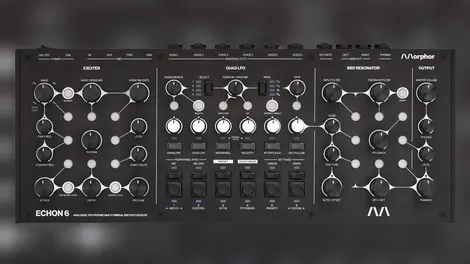HiChord: The Pocket-Sized Synthesizer That Makes Chord Playing Effortless for Everyone
Chord Playing Made Simple
Music creation has long been gatekept by complex theory and years of practice, but PocketAudio's HiChord is changing that narrative. This pocket-sized synthesizer introduces a "no wrong notes" philosophy through its innovative chord mapping system, making harmonically rich music accessible to beginners while offering depth for experienced musicians.

The HiChord's core innovation lies in its seven chord buttons, automatically mapped using the Nashville Number System. This means each button corresponds to a chord that naturally fits with all others in the current key. Whether you press one button or all seven simultaneously, the result will always be musically pleasing. This removes the intimidation factor that often prevents people from exploring music creation.
The device features a modifying joystick that transforms how chords sound in real-time. Hold any chord button and tilt the joystick to cycle through major, minor, seventh, suspended, augmented, and diminished variations. This system provides access to 882 possible chord combinations without requiring knowledge of complex music theory.
Key Features
- 7 chord buttons mapped to Nashville Number System (I, ii, iii, IV, V, vi, vii°)
- 12-oscillator digital synthesizer with multiple waveforms (sine, saw, square, triangle, piano, Wurlitzer)
- Chord modifying joystick for real-time major/minor/7th/sus variations
- Built-in effects: reverb, delay, flanger, tremolo, lowpass filter, LFO, glide
- USB-C connectivity for MIDI output and charging
- Built-in speaker and headphone output
- OLED display for parameter feedback
- Rechargeable battery for portable operation
Creative Modes
HiChord offers five distinct modes for different musical applications:
- Play Mode: Standard chord triggering for live performance and songwriting
- Arp Mode: Automatic arpeggiation with customizable patterns and timing
- Repeat Mode: Rhythmic chord triggering at set tempos for groove creation
- Drum Mode: Percussion sounds mapped to buttons (kick, snare, hi-hat, toms, crash)
- AutoDrum Mode: Automatic drum pattern generation synchronized to tempo

The sound engine delivers impressive depth for such a compact device. With 12 oscillators and multiple waveforms including sine, sawtooth, square, triangle, plus instrument-inspired tones like piano and Wurlitzer, users can craft everything from warm pads to cutting leads. The built-in effects processor includes reverb, delay, flanger, tremolo, lowpass filter, LFO modulation, and glide, all controllable through the intuitive menu system.
Professional features include USB-C MIDI connectivity for integration with DAWs and other music software. The device can send full chords, individual arpeggio notes, or rhythmic triggers, making it valuable for both live performance and studio production. A built-in looper allows recording and layering of chord progressions or drum patterns for seamless live performance.
The compact aluminum housing measures just 100mm x 71mm x 28.65mm, making it truly pocketable. The 0.49-inch OLED display provides clear feedback for all parameters, while the rechargeable battery ensures hours of mobile music-making. Power and connectivity are handled through a single USB-C port.
Our Take
The HiChord shines in areas where portability meets creativity. The built-in battery and speaker combination makes it genuinely mobile - you can sketch ideas anywhere without needing additional gear. For bedroom producers and songwriters, this represents excellent value, packing an impressive feature set into such a compact device. The Nashville Number System approach cleverly removes theoretical barriers while maintaining musical coherence.
What's particularly appealing is the device's boutique feel. Each unit appears to be carefully assembled rather than mass-produced, giving it a custom shop quality that justifies the premium over basic alternatives. This attention to detail shows in the aluminum construction and thoughtful interface design.
However, the compact form factor creates some operational challenges. Using the volume wheel to control filter cutoff when the filter effect is active feels awkward and slows down creative flow. The interface compromises are noticeable - what works for quick sketches might frustrate users wanting deeper sound design control.
The sound palette, while versatile, has clear limitations that become apparent during extended use. Producers seeking extensive sonic variety might find themselves constrained by the available waveforms and effects. Additionally, the ADSR envelope implementation offers only six presets (LONG, SHORT, SWELL, PLUCK, TOUCH, SUSTAIN) rather than full attack, decay, sustain, and release parameter control. This preset-only approach speeds up workflow but limits precision sound shaping.
Despite these limitations, the HiChord succeeds as a creative catalyst. It's designed for immediate musical gratification rather than deep synthesis programming. For sketching chord progressions, jamming with friends, or adding harmonic elements to existing productions, it delivers exactly what it promises. The looper and multiple modes show the developers understand modern music-making workflows, particularly in electronic and beat-based genres.
The HiChord represents thoughtful compromise engineering - sacrificing some control depth for unprecedented portability and ease of use. It's not trying to replace your studio setup, but rather to be there when inspiration strikes.

